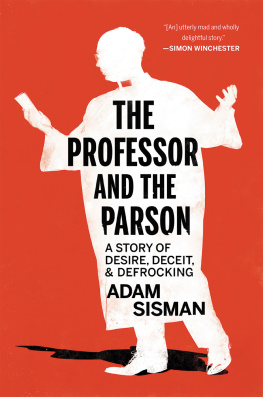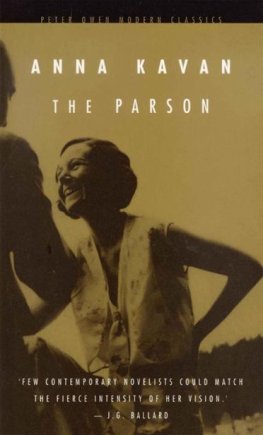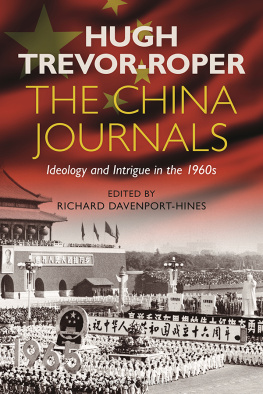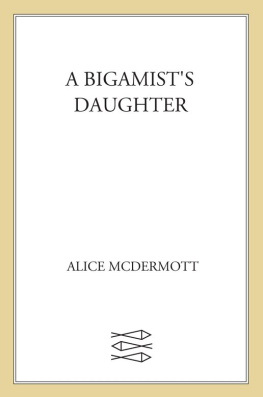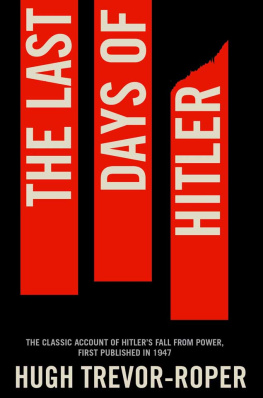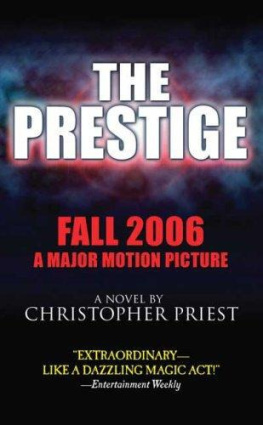Contents
Guide

ALSO BY ADAM SISMAN
A. J. P. Taylor: A Biography
Boswells Presumptuous Task
Wordsworth and Coleridge: The Friendship
Hugh Trevor-Roper
John le Carr

The Professor and the Parson
Copyright 2019 by Adam Sisman
First published in Great Britain in 2019 by PROFILE BOOKS LTD, 3
Holford Yard, Bevin Way, London, wc1x 9hd, www.profilebooks.com
First Counterpoint hardcover edition: 2020
All rights reserved under International and Pan-American Copyright
Conventions. No part of this book may be used or reproduced in any manner whatsoever without written permission from the
ISBN: 978-1-64009-328-7
The Library of Congress Cataloging-in-Publication Data is available.
Jacket design by Richard Ljoenes
Book design by MacGuru Ltd
COUNTERPOINT
2560 Ninth Street, Suite 318
Berkeley, CA 94710
www.counterpointpress.com
Printed in the United States of America
Distributed by Publishers Group West
13579108642
For Felicity
It shows, my dear Watson, that we are dealing with an exceptionally astute and dangerous man. The Rev. Dr Shlessinger, missionary from South America, is none other than Holy Peters, one of the most unscrupulous rascals that Australia has ever evolved and for a young country it has turned out some very finished types. His particular speciality is the beguiling of lonely ladies by playing upon their religious feelings, and his so-called wife, an English woman named Fraser, is a worthy helpmate.
from The Disappearance of Lady Frances Carfax by Arthur Conan Doyle
Contents

O n 25 November 2005 a man died at Kettering General Hospital, Northamptonshire. The death certificate was registered four days later. The person registering the death was Ann Barbara Peters, widow of the deceased. The dead mans name was given as Robert Peters. He was described as a retired university lecturer. The certificate gave his date of birth as 11 August 1928, which made him seventy-seven at the time of his death.
None of these details was true.
I happened upon the story of Robert Peters while writing a biography of the historian Hugh Trevor-Roper. Like most people, I had not heard of Peters before. I first noticed his name on the cover of a thick folder, inscribed by fountain pen in Trevor-Ropers lucid, distinctive hand. The folder was among the papers in his study at the Old Rectory, sometimes unkindly described as the only nice house in Didcot. After Trevor-Ropers death in 2003, the Old Rectory remained silent and uninhabited for several years, its contents largely undisturbed. In winter it was bitterly cold. I would go there occasionally to work on these papers, trying to keep warm in coat and gloves until the heating took the edge off the chill. On at least one occasion I slept in Trevor-Ropers bed; his clothes still hung in the wardrobe, and there were still books on the bedside table, including of course a volume of Horace. His was no ordinary archive; among the more conventional records of an academic historian was correspondence with some of the most senior officers in British intelligence, and other documents relating to Trevor-Ropers wartime service with MI6 including an adjutants ledger of Hitlers appointments, no doubt pocketed during Trevor-Ropers exploration of the ruined and partially flooded bunker in the autumn of 1945. Eventually the contents of his study were removed to Christ Church. As the movers lifted one of the archive boxes into the waiting van, a Luger dropped out.
My biography of Trevor-Roper was published in 2010. As the book relates, Trevor-Roper met Peters in Oxford in the late 1950s. Trevor-Roper was then a professor, and Peters a student reading for a postgraduate degree. The professor agreed to see him, to hear Peters complain that he was being persecuted. Like so many others before and since, Trevor-Roper believed the elaborate tale that Peters told him, until it began to collapse under the weight of contrary evidence. Once he realised that Peters had been lying, Trevor-Roper was sufficiently intrigued to want to know more. He investigated further, and was startled by what he discovered. As a responsible academic, he was appalled by Peterss success in outwitting the authorities; but as an individual who delighted in the comdie humaine, he could not help being amused by it. He took a malicious glee in the discomfiture of those whom Peters had fooled. Peterss ploys exposed the innocence of some, and the pomposity of others.
Trevor-Roper began to keep a dossier on Peters, which he would maintain for the next quarter of a century. A network of informants, in different countries and in different spheres of life, kept the professor abreast of the latest antics of our old friend. It was this bulky dossier that I found in Trevor-Ropers archive while conducting research into his life. In my biography I drew on the dossier to write a brief account of Trevor-Ropers initial brush with Peters. But this was only the beginning; most of what he learned about Peters remained untold. The professor was urged to write a book about the bogus parson, and was tempted to do so; but he hesitated, deterred by the threat of a defamation suit while Peters yet lived. He continued to collect information about Peters, but for now he preferred to write about another extraordinary fraudster, this one safely dead: the eccentric Sinologist Sir Edmund Backhouse. Though their backgrounds were utterly different, Trevor-Roper recognised similarities between the characters of Peters and Backhouse. The deceitfulness of such men was matched by their gall.
In 2017, while I was revisiting Trevor-Ropers archive, now safely stowed in Oxford, it occurred to me to consider writing about Peters myself. Trevor-Ropers dossier was my starting point, but I soon found another substantial file on Peters, kept by successive Presidents of Magdalen, the Oxford college to which Peters had belonged at the time when he met Trevor-Roper; and then another bulky folder, in the Cambridge University Library, of material on Peters assembled by a former Regius Professor of Divinity. I contacted a retired clergyman, then in hospital in the last stages of his final illness, who ensured that I received his own dossier, which he jokingly referred to as The Life and Crimes of Robert Parkin Peters. Other documents came my way through a variety of sources; one of those with whom I made contact had contemplated writing a book about Peters himself. I am sure that there is more material to be found: not least at Lambeth Palace, where there is said to be a filing cabinet stuffed with papers on Peters. My attempts to storm the palace have been repulsed. The official line is that clergy disciplinary files cannot be made available to scholars until thirty years after the subjects death in this case until 2035, and I cannot wait that long. My argument that Robert Peters had not been an Anglican clergyman since 1955 was met with a stony silence: the door has remained firmly shut. Of course I understand why such files are sensitive; but if the story of Robert Peters shows anything, it is that swindlers benefit from the reluctance of individuals and institutions to reveal that they have been swindled. Secrecy benefits the criminal. In this instance, so far as I am aware, the Church of England has little, if anything, of which to be ashamed, though perhaps something of which to be embarrassed. Earlier custodians of Lambeth Palace had been keen to spread the word about Peterss misdemeanours, but the incumbents prefer to keep mum. It cannot possibly do any harm, and it might well do good, for Lambeth Palace to make an exception to its own arbitrary rule. But there is no reasoning with the bureaucratic mind.
Next page
